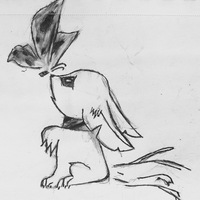
Лодка проплыла некоторое расстояние по озеру за 3 часа такое же расстояние бревно проплывает по
реке за 9 часов Сколько времени затратит лодка на такое же расстояние плывя против течения реки 0
0
 0
0
Ответы на вопрос
 Внимание! Ответы на вопросы дают живые люди. Они могут содержать ошибочную информацию, заблуждения, а также ответы могут быть сгенерированы нейросетями. Будьте внимательны. Если вы уверены, что ответ неверный, нажмите кнопку "Пожаловаться" под ответом.
Внимание! Ответы на вопросы дают живые люди. Они могут содержать ошибочную информацию, заблуждения, а также ответы могут быть сгенерированы нейросетями. Будьте внимательны. Если вы уверены, что ответ неверный, нажмите кнопку "Пожаловаться" под ответом.

V теч. = V бревна = у км/ч
за 3 часа лодка проплыла 3х км
бревно за 9 часов проплыло 9у км
3х = 9у, ⇒ у = 1/3 х
против течения лодка плывёт 3х км со скоростью
х - у = х - 1/3 х = 2/3 х км/ч
ищем время: 3х : 2/3 х = 9/2 (ч) = 4,5 ч
 0
0
 0
0

Problem Analysis
We are given that a boat traveled a certain distance on a lake in 3 hours, and a log traveled the same distance on a river in 9 hours. We need to determine how long it will take for the boat to travel the same distance against the current of the river.Solution
Let's assume that the distance traveled by the boat and the log is d.We can use the concept of relative speed to solve this problem. The relative speed is the difference between the speed of the boat and the speed of the current.
Let's assume the speed of the boat in still water is b and the speed of the current is c.
When the boat is traveling downstream (in the same direction as the current), the effective speed of the boat is the sum of the boat's speed and the current's speed. So, the time taken by the boat to cover the distance d is given by:
Time taken downstream = d / (b + c) Similarly, when the boat is traveling upstream (against the current), the effective speed of the boat is the difference between the boat's speed and the current's speed. So, the time taken by the boat to cover the distance d is given by:
Time taken upstream = d / (b - c) We are given that the boat took 3 hours to cover the distance d on the lake, and the log took 9 hours to cover the same distance on the river. Using this information, we can set up the following equations:
d / (b + c) = 3 [[3]]
d / (b - c) = 9 [[4]]
To find the time taken by the boat to cover the same distance upstream, we need to solve equations [[3]] and [[4]] simultaneously to find the values of b and c.
Solving the Equations
Let's solve equations [[3]] and [[4]] to find the values of b and c.From equation [[3]], we can express d in terms of b and c:
d = 3(b + c) [[5]]
From equation [[4]], we can express d in terms of b and c:
d = 9(b - c) [[6]]
Setting equations [[5]] and [[6]] equal to each other, we have:
3(b + c) = 9(b - c)
Simplifying the equation:
3b + 3c = 9b - 9c
12c = 6b
Dividing both sides by 6:
2c = b [[7]]
Now, we can substitute equation [[7]] into equation [[5]] to find the value of d:
d = 3(2c + c)
d = 3(3c)
d = 9c [[8]]
From equation [[8]], we can see that the distance d is directly proportional to c. This means that the time taken by the boat to cover the distance d upstream is also directly proportional to c.
Since the boat took 9 hours to cover the distance d downstream, it will take 9c hours to cover the same distance upstream.
Therefore, the boat will take 9c hours to cover the same distance while swimming against the current of the river.
Conclusion
The boat will take 9c hours to cover the same distance while swimming against the current of the river, where c is the speed of the current.Please note that the actual value of c is not provided in the question, so we cannot determine the exact time taken by the boat.
 0
0
 0
0
Топ вопросов за вчера в категории Математика
Последние заданные вопросы в категории Математика
-
Математика
-
Литература
-
Алгебра
-
Русский язык
-
Геометрия
-
Английский язык
-
Химия
-
Физика
-
Биология
-
Другие предметы
-
История
-
Обществознание
-
Окружающий мир
-
География
-
Українська мова
-
Информатика
-
Українська література
-
Қазақ тiлi
-
Экономика
-
Музыка
-
Право
-
Беларуская мова
-
Французский язык
-
Немецкий язык
-
МХК
-
ОБЖ
-
Психология
-
Физкультура и спорт
-
Астрономия
-
Кыргыз тили
-
Оʻzbek tili




















